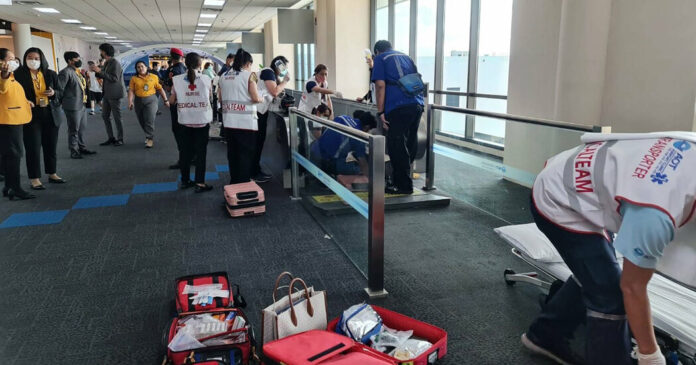The News
An airline passenger in Thailand had part of her leg amputated this week after an accident on a moving airport walkway, the Thai authorities said.
The accident, involving a 57-year-old woman, occurred Thursday in the domestic terminal of Don Mueang International, the older and smaller of two major airports that serve Bangkok, the capital.
It’s unclear precisely what happened. Local news media initially reported that the woman’s leg had been pulled into the walkway’s machinery after she tripped on her suitcase. But her family said on Saturday that she had been walking normally when part of the walkway collapsed.
What’s clear is that her leg was amputated up to the kneecap after the accident. The Thai authorities are now trying to determine if the accident resulted from human error or an equipment malfunction.
Why It Matters: Walkways are widely used and seldom feared.
Such walkways are known as “moving walks” to government regulators and construction companies. Moving walks are often talked about in the same breath as escalators because they use similar technology and move at about the same speed — generally 100 feet per minute, or just over 1 mile per hour.
The main difference is incline. An escalator sits at about 30 degrees, but a moving walk’s incline is typically no more than a tenth of that. Many moving walks are flat.
Escalators and moving walks ease the movement of billions of people through airports, shopping malls and other public spaces each year. The National Elevator Industry, Inc., an industry group in the United States, estimates that about 105 billion passengers ride escalators annually — the world’s population, multiplied by 13 — in the United States alone.
Escalators and moving walks are widely seen as very safe. But, like virtually any form of public transportation, they occasionally malfunction.
In Australia, for example, inspectors in the state of Queensland found two recent examples of moving walks that were operating with a missing pallet, the technical term for the metal slats that separate passengers from the whirring machinery below.
And in Thailand, a passenger at Don Mueang International Airport reported losing a shoe to the machinery of a moving walk in 2019, Thai news media outlets reported this week.
Background: How likely is an accident on an airport walkway?
Data for the safety of moving walks is scarce. But if we go by escalator safety data, the answer is “not very.”
An average of two deaths per year in the United States involve escalators, lower than the figure for elevators, according to a 2013 review of U.S. government data by the Center for Construction Research and Training, a nonprofit group in Maryland.
The risk of injury is higher: About 10,000 escalator-related injuries result in a trip to the emergency room in the United States each year. But even that figure is exceedingly small if you consider the sheer volume of escalator and moving walk trips that people take every day.
In Thailand, the moving walk where the accident occurred this week had been used at Don Mueang International since 1996, the airport’s director, Karant Thanakuljeerapat, told reporters.
Don Mueang carried more than 13 million domestic passengers last year, and nearly twice as many in the years immediately before the coronavirus pandemic, according to government data. So over nearly three decades, a moving walk there could have carried many tens of millions of passengers.



